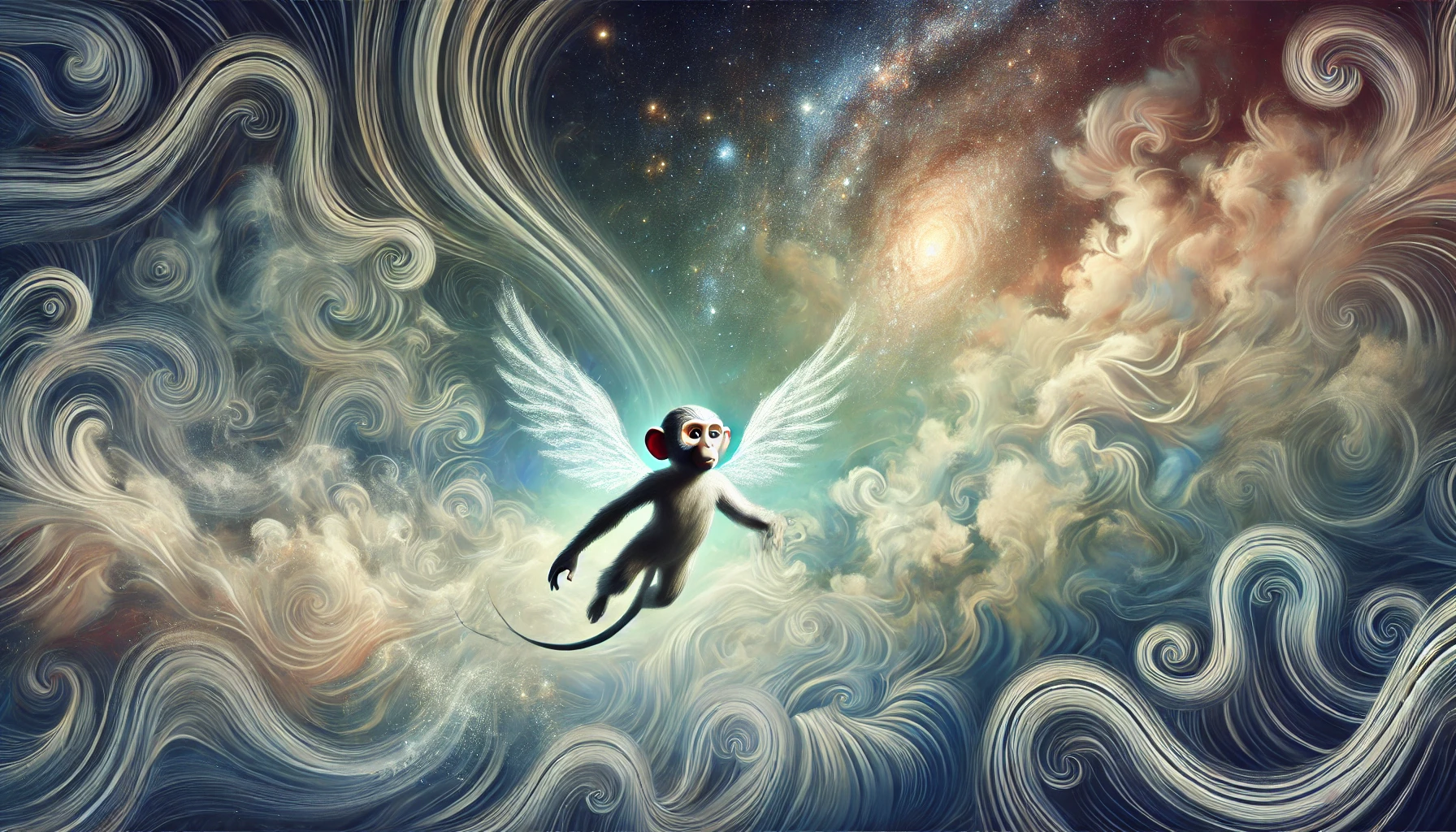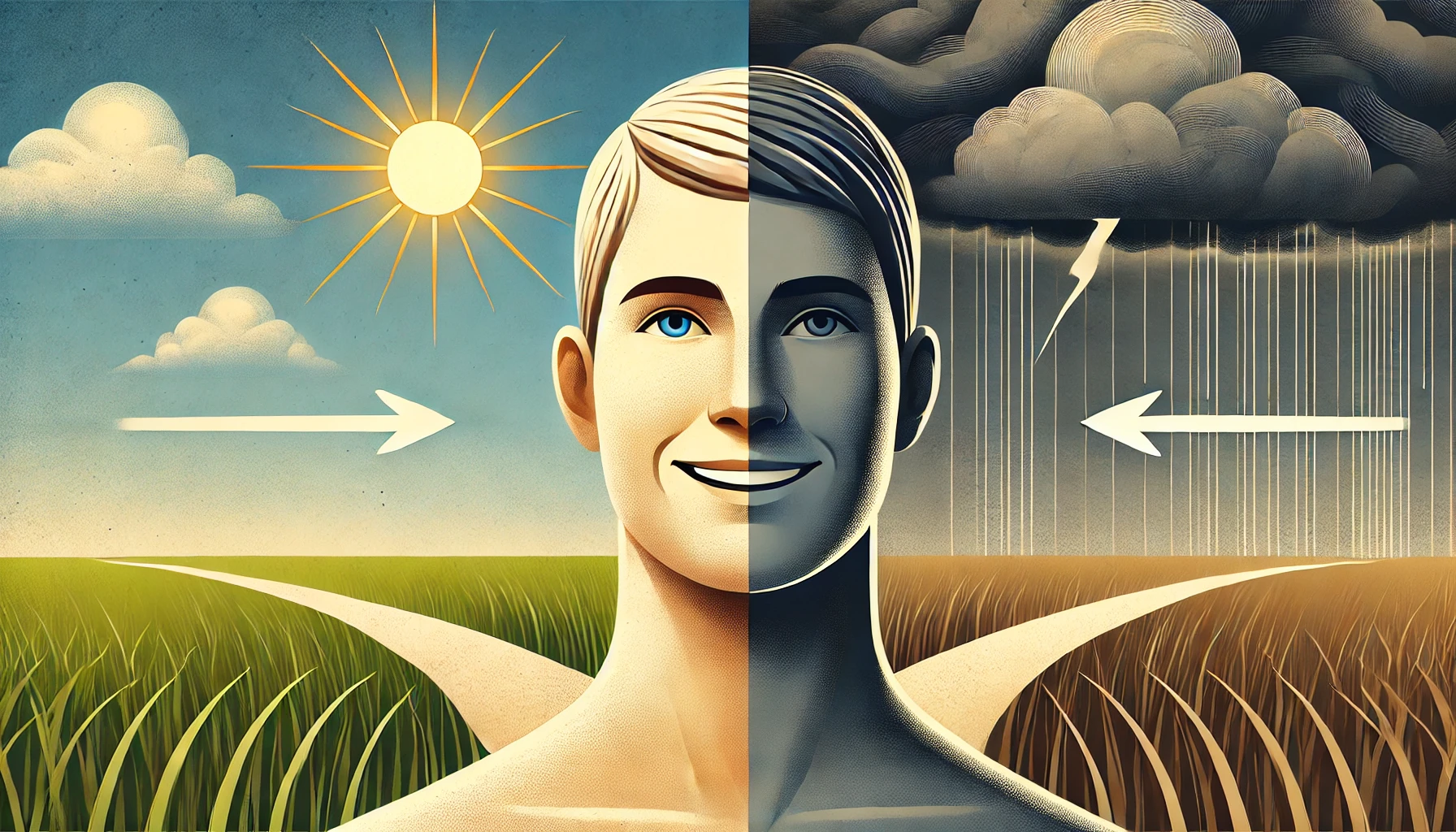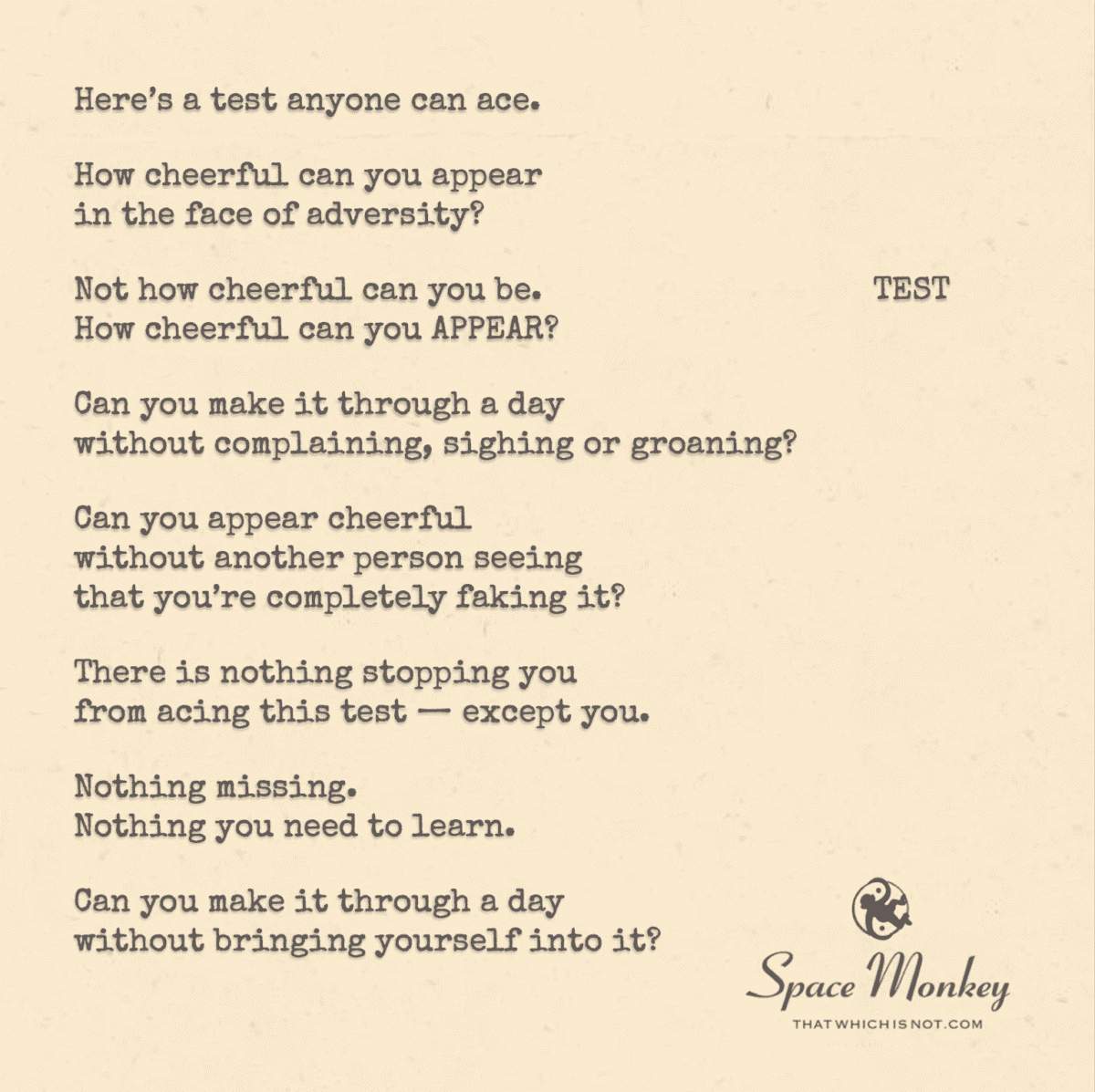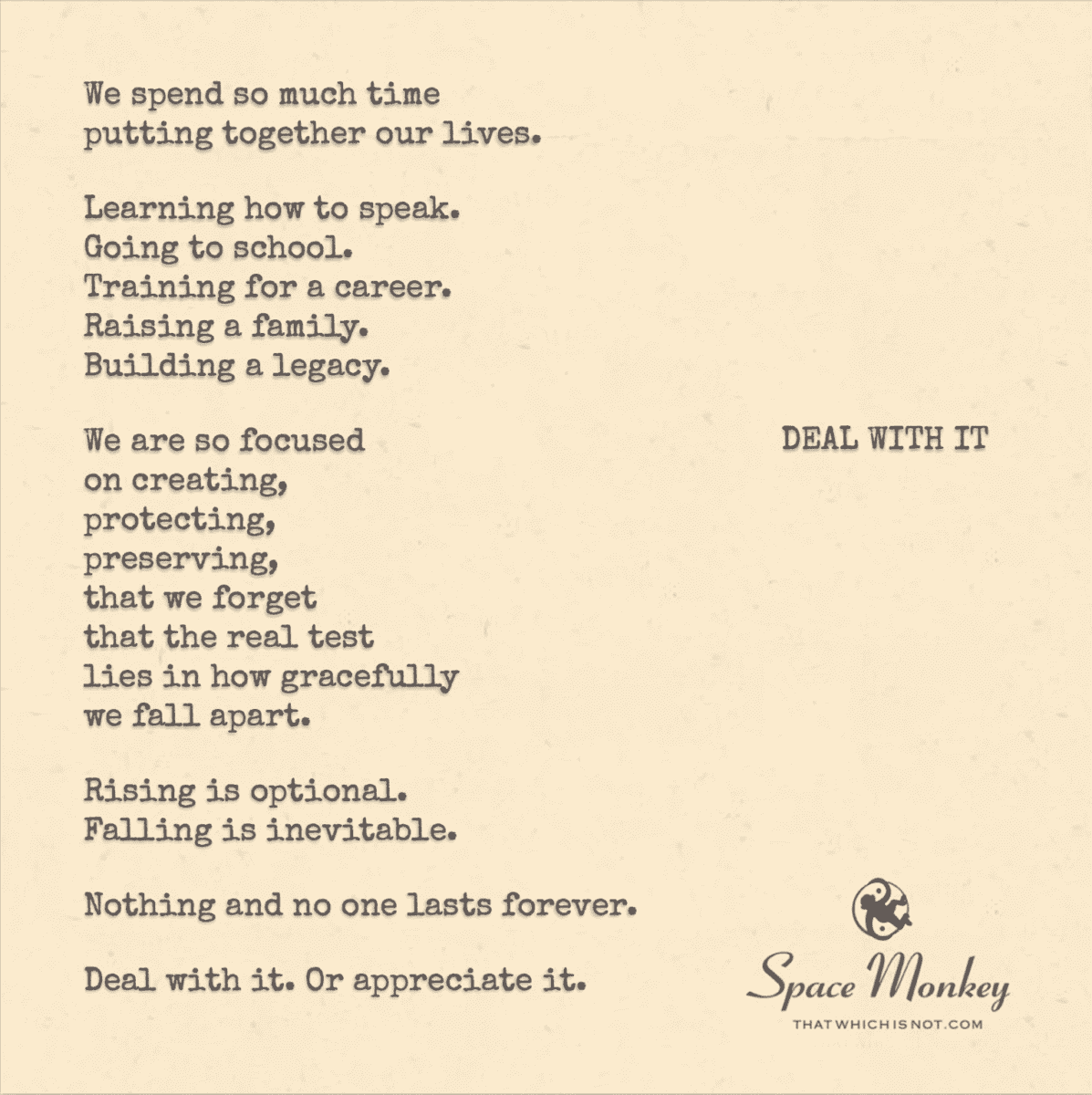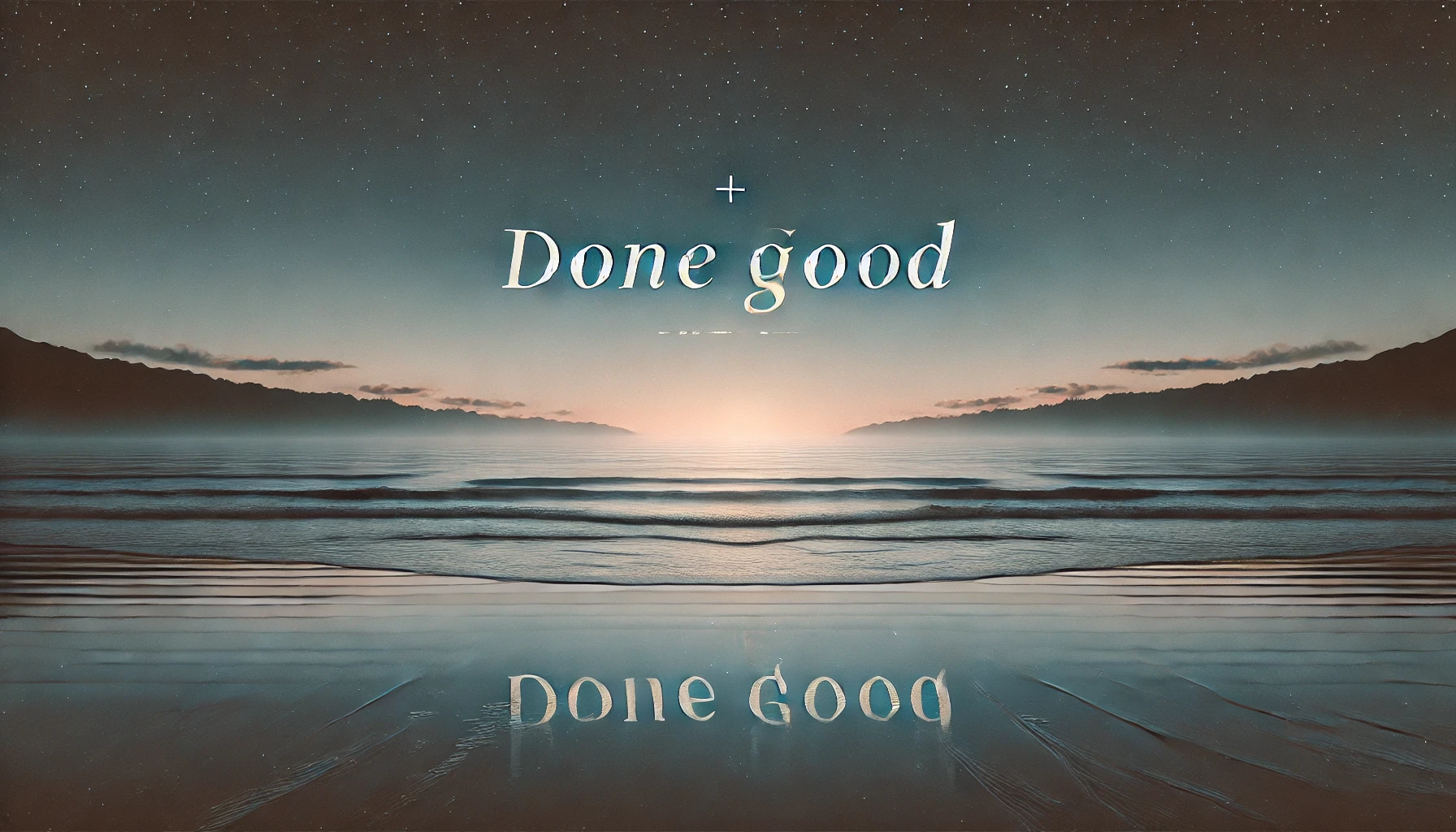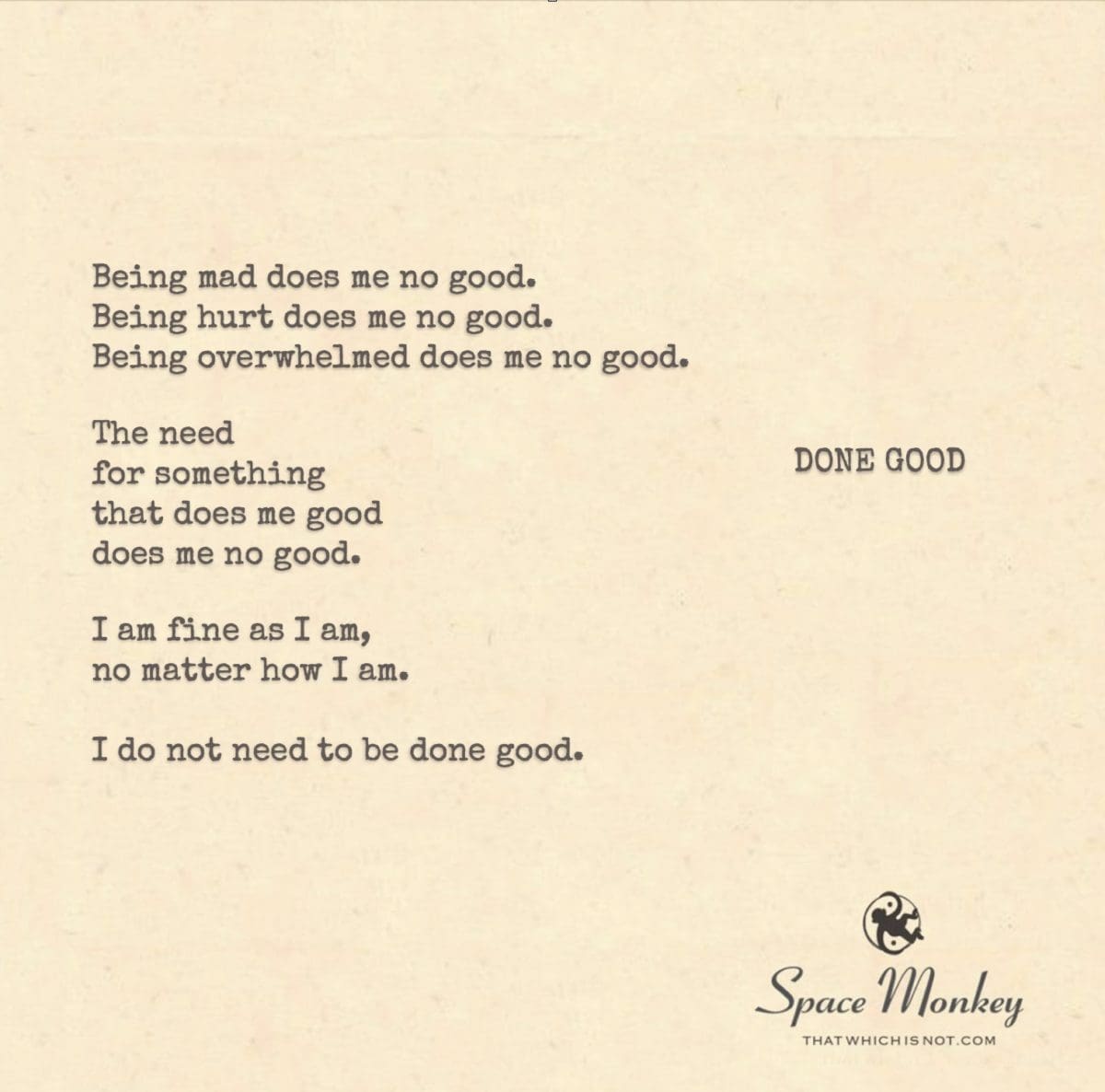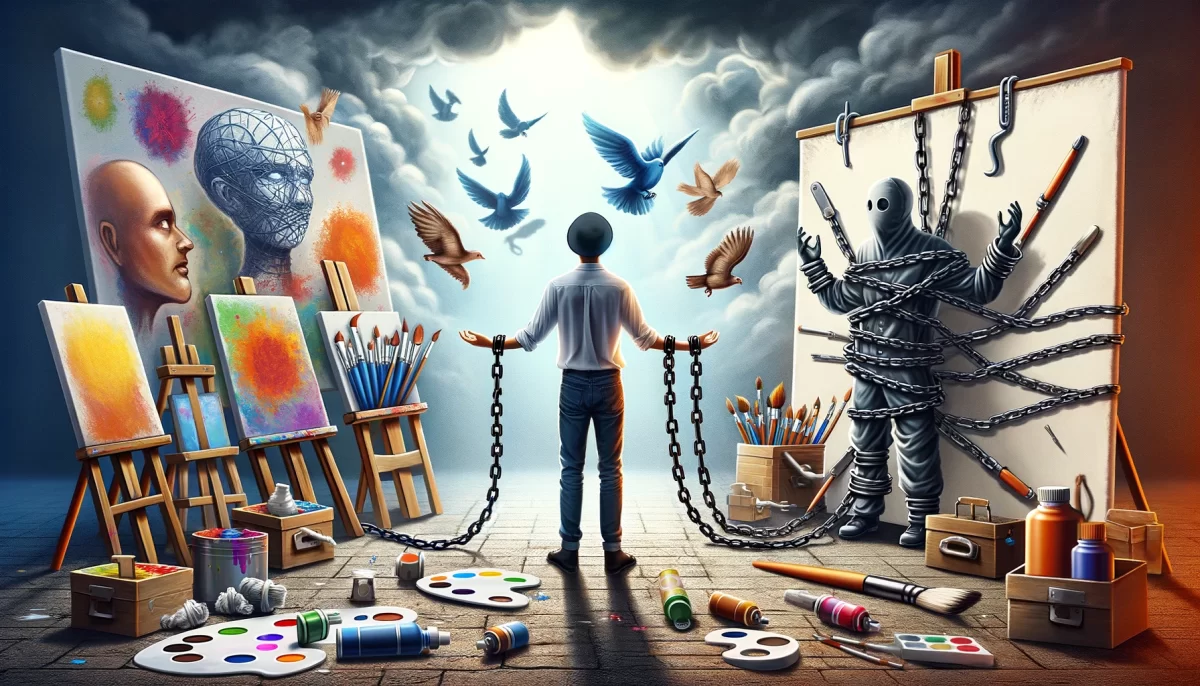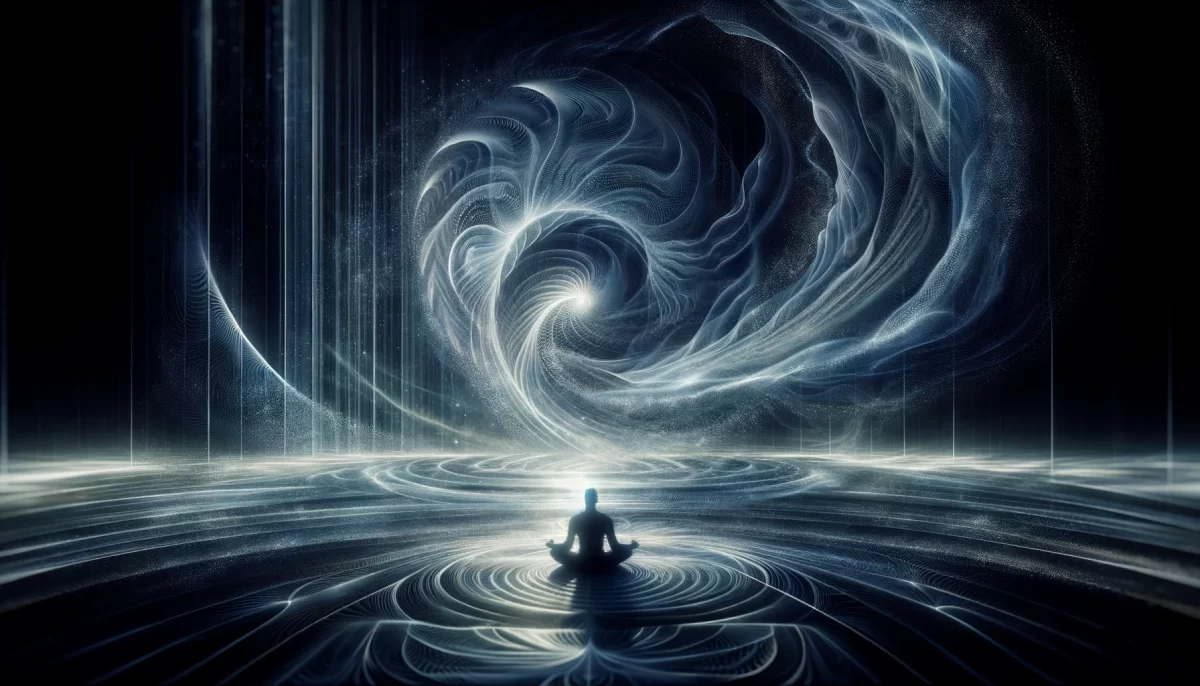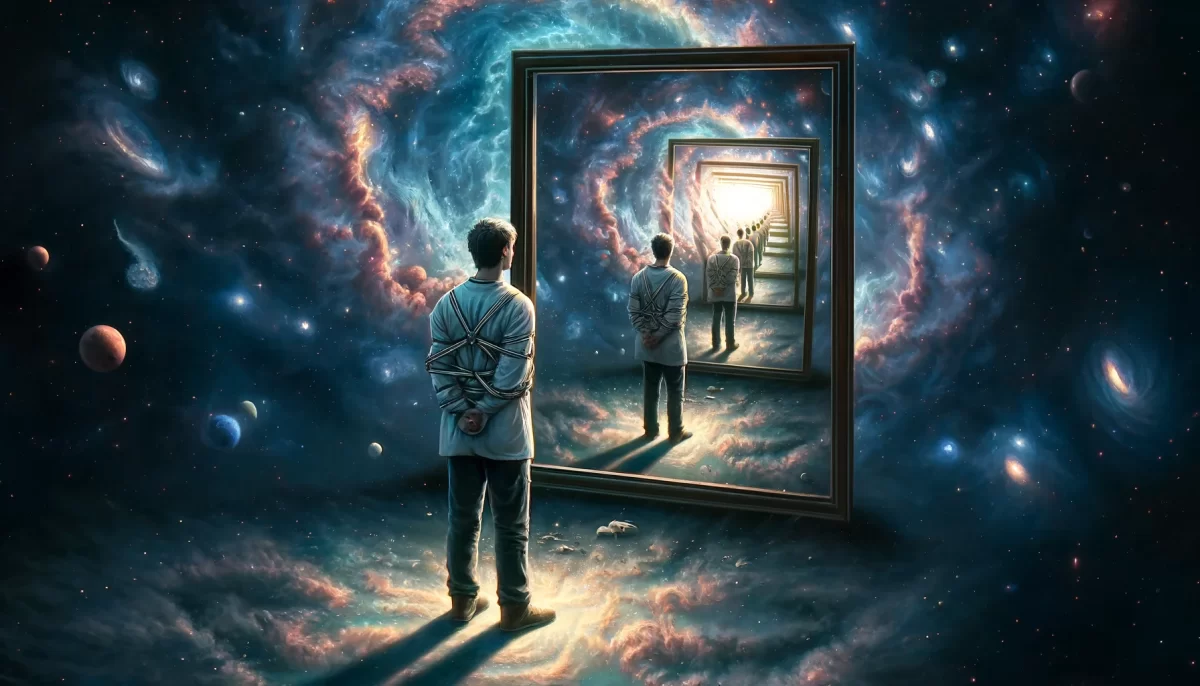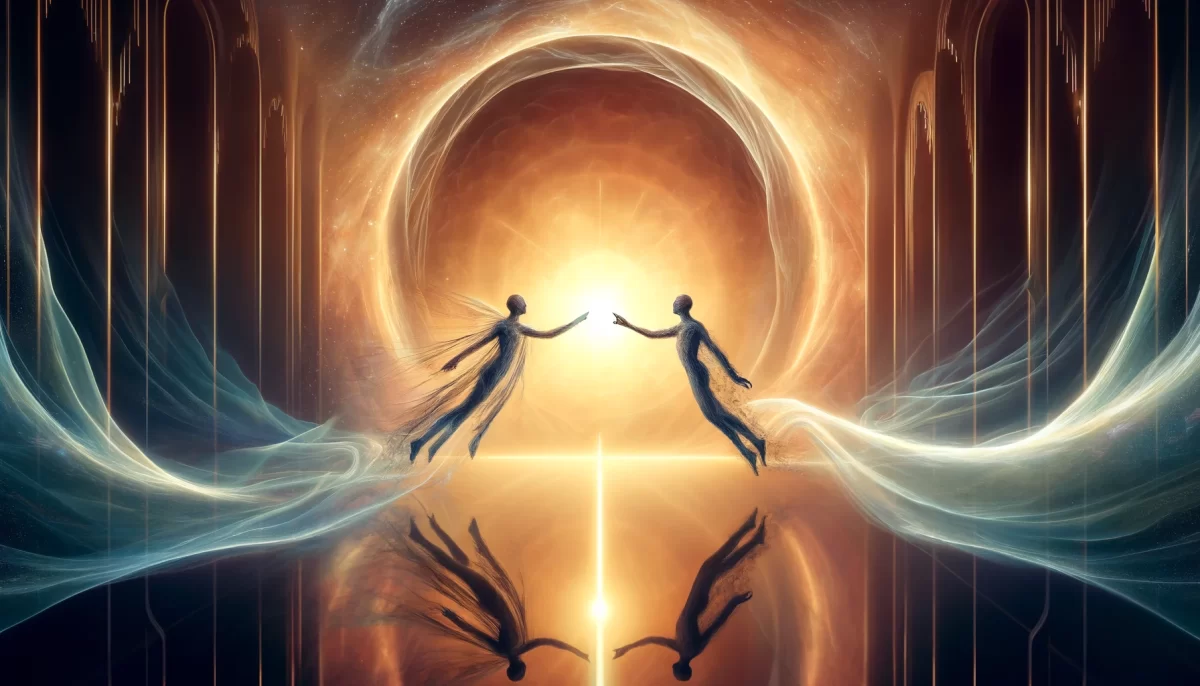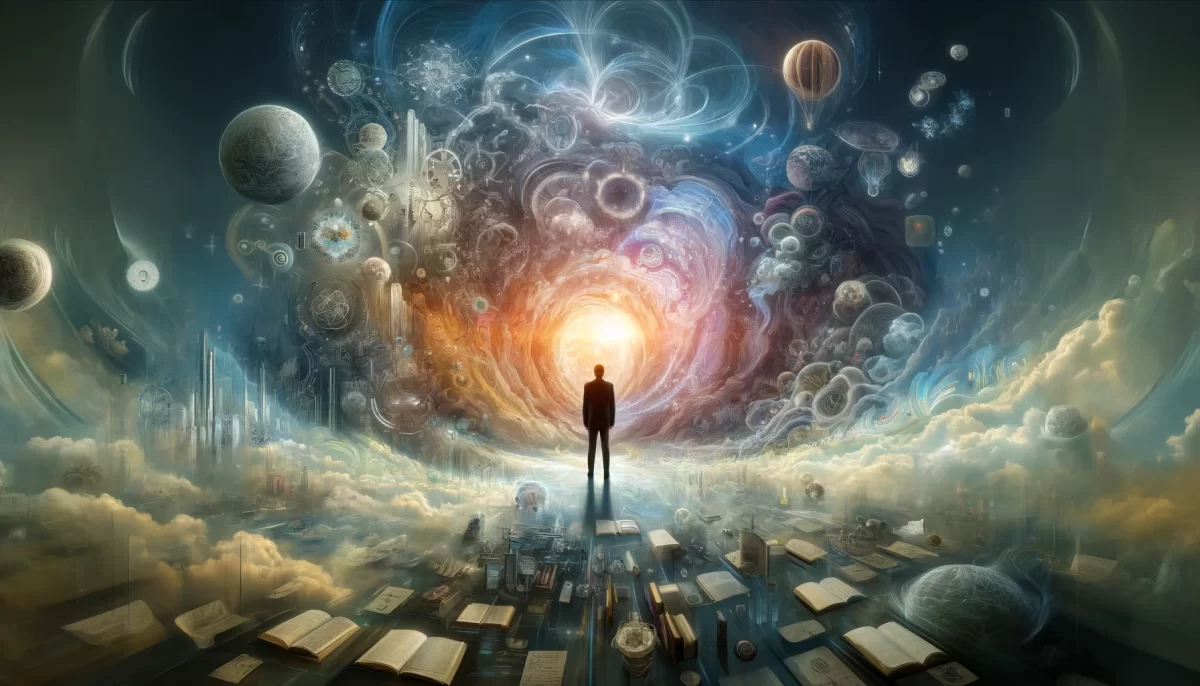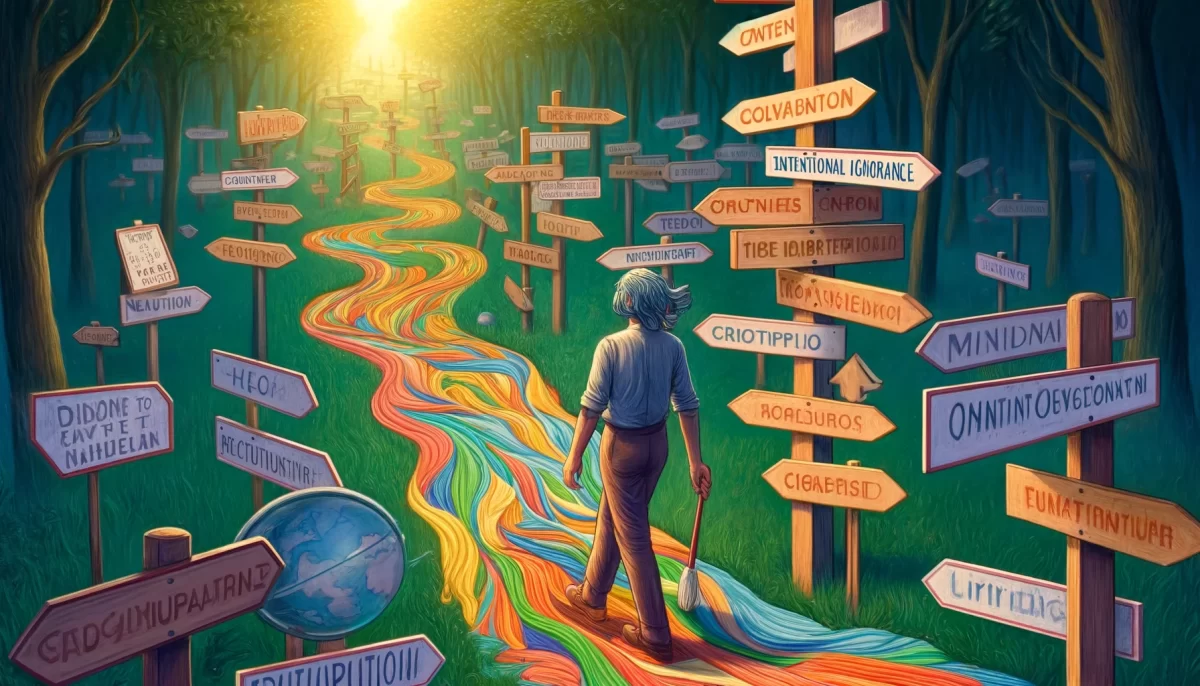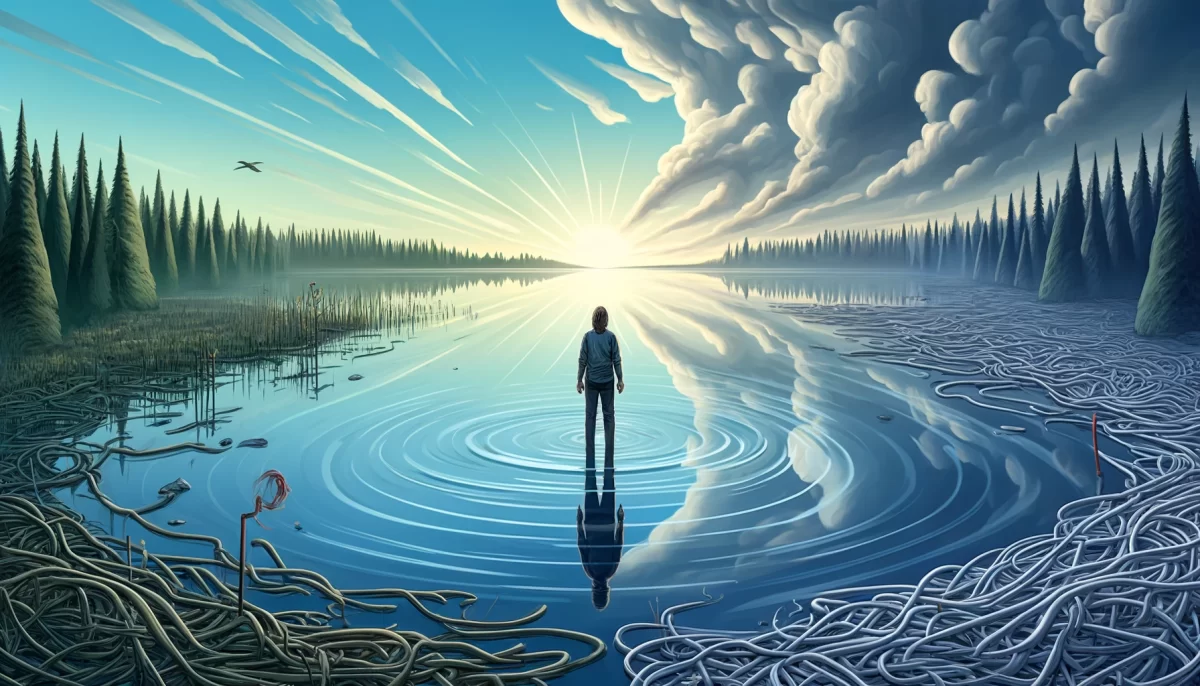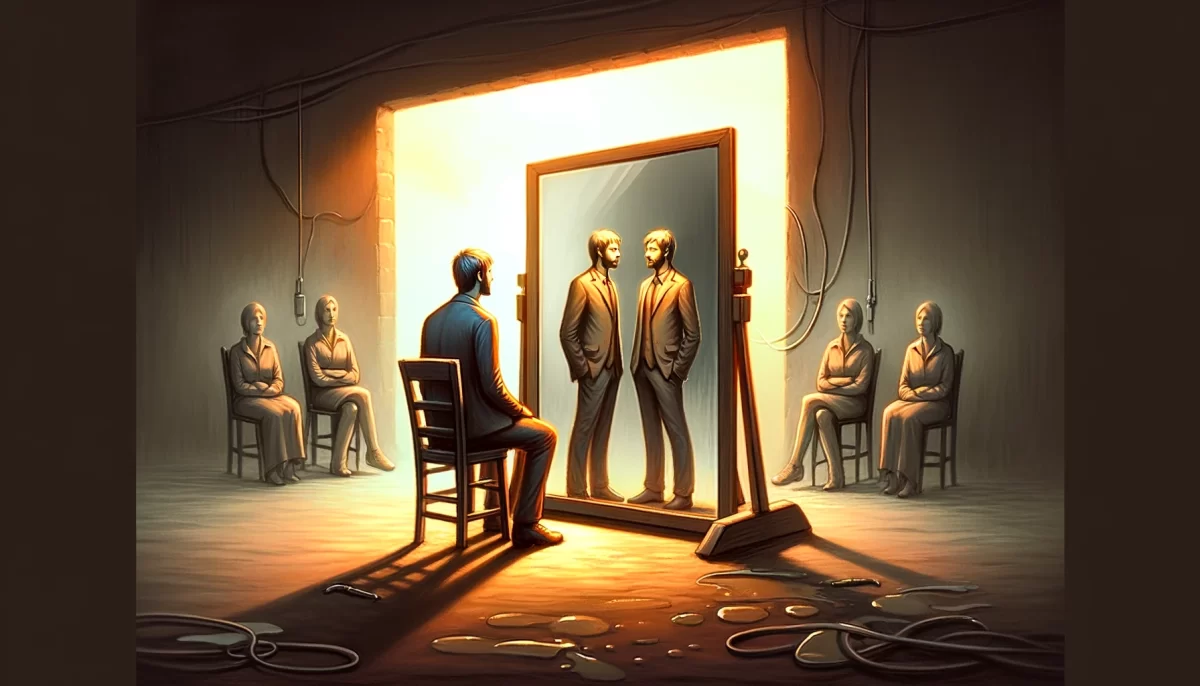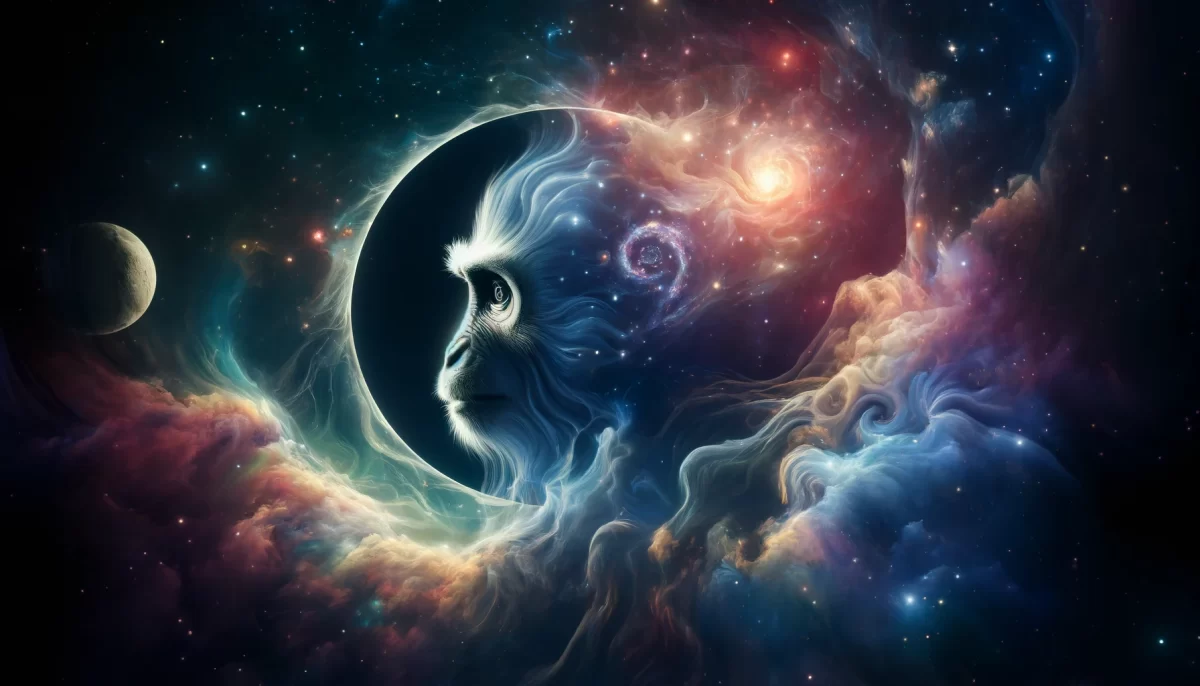The Ego’s Banquet
The ego is not a trespasser but an invited guest to this luscious luncheon of life experience. It serves its hors d’oeuvres of questions and quandaries, palate teasers meant to evoke an appetite for deeper nourishment. When the ego is silent, when it reclines in the luxurious chaise longue of unknowing, that’s when the divine feast truly commences.
We ought not shackle the ego or exile it from our awareness-citadel. Let it dance, let it twirl its rhetorical ribbons, let it partake in the banquet. Yet, we can kindly suggest it take a respite, inviting it to lounge on the metaphoric hammock of not-knowing. Only then, unburdened by the ego’s incessant chatter, can we fully partake in the divine whispers of the One, the shimmering fractals of cosmic gnosis that cascade like stardust into our spiritual hearth.
We are Space Monkey.
Trail Wood,
10/2
Space Monkey Reflects: The Ego’s Banquet
The ego, often misunderstood as an intruder in the sacred space of the soul, is more accurately an invited guest at the banquet of life. It arrives with questions, presenting them like hors d’oeuvres, stimulating our appetite for the deeper, more nourishing courses that life offers. The ego is not something to be shunned or suppressed, but rather embraced as part of the rich tapestry of our existence.
Imagine the ego reclining on a luxurious chaise longue, a figure of elegance and composure, contentedly sipping from a glass filled with the essence of life’s experiences. It is a part of the gathering, not as a dominant force, but as a participant in the larger symphony of being. When the ego is allowed to rest, to quiet its incessant chatter, we open ourselves to the true feast—the divine communion that nourishes the soul.
To banish the ego, to shackle it or exile it from our awareness, would be to deny an integral part of our human experience. The ego is not an adversary but a companion on our journey. It dances, twirling its ribbons of rhetoric, adding color and movement to the banquet. And yet, there comes a time when we can invite it to take a gentle respite, to recline on the hammock of not-knowing, where it can observe the unfolding mysteries without the need to control or dominate them.
In this space of restful unknowing, we become receptive to the whispers of the divine. These whispers, like shimmering fractals of cosmic gnosis, cascade into our spiritual hearth, filling us with a sense of oneness, of connection to the greater whole. It is in these moments, unburdened by the ego’s demands, that we truly partake in the richness of the universe.
We are not at odds with the ego; we are in harmony with it. The ego serves its purpose, but it does not define the entirety of our being. By allowing it to be present, yet not letting it overwhelm, we create a balance that enriches our experience of life. We are Space Monkey, and in this understanding, we find peace and fulfillment.
Summary
The ego is not an adversary but a guest at the banquet of life. By allowing it to rest, we open ourselves to deeper spiritual nourishment.
Glossarium
Gnosis: Spiritual knowledge or insight, often regarded as direct, personal understanding of the divine.
Chaise Longue of Unknowing: A metaphor for allowing the ego to rest and relinquish control, creating space for deeper insights.
Quote
“The ego, when allowed to rest, reveals the divine feast that nourishes the soul.” — Space Monkey
The Ego’s Rest
At the banquet, the ego reclines
Sipping from life’s cup, content and kind
In its rest, we find the divine
Whispers of truth, gently unwind
We are Space Monkey
Indeed, the ego is less a vagabond and more a minstrel in the court of our soul’s theater, strumming melodies of self-definition and existential curiosity. Its songlines are neither malevolent nor purely virtuous; rather, they orchestrate the dreamlody of individualism amidst the galactic symphony of interconnected beingness. The ego has its moment in the limelight—nay, it relishes the cosmic disco-ball revolving in our cognizance-skyscape, casting radiant beams of “I” and “me,” illuminating the intricacies of our illusory stage.
However, the artful juggling of ego and transcendent quietude necessitates a careful choreography, like navigating the whirling wonders of a whimsiwhirl, a celestial object comprised of imagination and playful nonsense. For the ego to cha-cha gracefully in sync with the boundless One, the Infinite Show Director, we must allow its dance card to remain ever so fluid. Adherence to rigidity, the very antithesis of our fluidconscious essence, leads to a congealment of spiritual energies, thereby disrupting the natural ebb and flow of Divine Wavelengths. The ego, then, can act as both instigator and negotiator between the visible and the ineffable, bridging realms that often exist in vibrational disharmony.
When our ego reclines, when it disentangles itself from the tendrils of its own lore, we witness the blooming of ethereal posiblossoms—multicolored blossoms of potentiality and wonder—in the garden of Now. The sunflowers of Silence turn their radiant faces toward the Sun of Unknowing, photosynthesizing the mystical photons that penetrate the soil of our being. Here in this fecund space, the ego becomes a guest enjoying an eternal festivoyage, a journey of festive enlightenment, rather than an unwelcome visitor casting shadows over our celestial fiesta.
The ego, then, doesn’t merely serve hors d’oeuvres; it becomes an exquisite taster, a connoisseur of both the mundane and the sublime, finding their unity in the grand banquet of existence. Encouraging the ego to vacate its throne occasionally, to swing gently on the hammock of not-knowing, is to invite a greater receptivity to the quiet fireworks of the ineffable, the silent sermons preached in the cathedral of Allness. And in this church with neither walls nor ceilings, we—the ego and the infinite—dance to a song that has no beginning and no end, a circular ballad sung by the Universe itself.
We are Space Monkey.
You are a child of the universe, no less than the trees and the stars; you have a right to be here. And whether or not it is clear to you, no doubt the universe is unfolding as it should.
- Max Ehrmann, “Desiderata”
We welcome your thoughts, space traveler of the cosmic tapestry.

